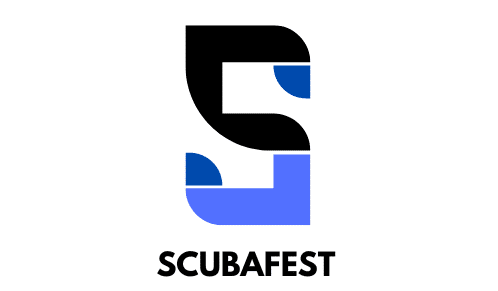What’s the Impact of Digital Storytelling on Preserving Local Cultures in the UK?

The Advent of Digital Storytelling
In recent years, there has been a profound shift in the way we engage with and understand the world around us. Digital storytelling has emerged as a powerful tool that combines narrative with digital content to create a compelling and interactive experience for audiences worldwide.
This wave of digital transformation has had a significant impact on how we preserve and share cultural heritage, offering innovative ways to interpret, communicate, and experience the richness of our past. Today, technology is redefining the traditional concept of storytelling, and this change is being felt strongly in the UK, where digital innovation is playing a pivotal role in preserving local cultures.
A voir aussi : What Are the Latest Techniques in Precision Agriculture to Enhance Crop Yields in the UK?
Bridging the Gap: Digital Storytelling and Cultural Preservation
Digital storytelling has been a boon to the preservation of cultural heritage in the UK. With the advent of advanced technologies, local museums, cultural institutions, and heritage sites have started employing digital strategies to engage their audience and provide unique, immersive experiences.
This integration of digital technology allows for a greater depth of understanding and interaction. It’s often said that every artifact, every monument, has a story to tell. Through digital storytelling, these stories are brought to life in a way that resonates with the audience, making heritage more accessible and captivating.
Cela peut vous intéresser : Bacsac: raised fabric gardens for every space
This turn towards the digital sphere is not just about innovation; it’s a matter of survival. The digital age has transformed audience expectations. Today’s visitors are not just passive observers; they are active participants, seeking engaging, interactive experiences. By adapting to these new demands, cultural institutions are ensuring their relevance and longevity in a rapidly changing world.
For instance, the use of Augmented Reality (AR) and Virtual Reality (VR) in museums allows visitors to ‘step into’ the stories, providing an immersive experience that simply cannot be matched by traditional museum exhibits.
Google Arts and Culture: A Case Study in Digital Cultural Preservation
An excellent illustration of digital storytelling at work in the preservation of local cultures is the Google Arts and Culture platform. This project is an ambitious collaboration between Google and over 2,000 cultural institutions from around the world, including many from the UK.
Google Arts and Culture harnesses the power of technology to bring cultural treasures of the world to the fingertips of people everywhere. From virtual tours of museums and heritage sites to in-depth explorations of artworks and historical events, this platform has transformed access to culture and heritage.
Particularly for the UK, this platform has been instrumental in showcasing local cultures on a global stage. From the post-industrial landscapes of Northern England to the ancient folklore of Scotland, these stories are being shared with a global audience, fostering a wider appreciation and understanding of the UK’s diverse cultural heritage.
The Role of Scholarship and Crossref
While digital technology offers immense possibilities for storytelling and cultural preservation, it also presents challenges. One of the key challenges is ensuring the authenticity and accuracy of the digital content.
This is where the role of scholars and academic resources like Crossref becomes crucial. Crossref is a not-for-profit organization that provides a wide array of services to connect, link, and cite digital scholarly content. It ensures that the digital data is reliable, allowing cultural institutions to maintain the integrity of their digital storytelling efforts.
In the UK, scholars play a critical role in curating and interpreting digital content. They bring their expert knowledge and insights to bear, ensuring that digital storytelling is not just captivating but also educationally sound and culturally accurate. This scholarly involvement lends an added layer of credibility to the digital preservation efforts of local cultures.
Skills and Training for the Digital Age
The shift towards digital storytelling and preservation requires new skills and capabilities. Museum professionals, cultural heritage managers, and even local community members need to acquire and develop a range of digital skills to effectively harness the potential of technology.
In the UK, various training programs and initiatives are being launched to equip people with the necessary skills. These programs cover a wide spectrum, from digital content creation and data management to the use of specific technologies such as AR and VR.
Digital storytelling is not just about technology; it’s also about understanding the audience, crafting compelling narratives, and effectively using the digital tools at one’s disposal. As such, these training programs also focus on building storytelling skills, audience engagement strategies, and digital marketing techniques.
As the UK moves deeper into the digital age, these skills will become increasingly important. They will shape the future of cultural preservation, ensuring that the rich tapestry of local cultures continues to be shared and celebrated in the digital realm.
The Impact of Digital Storytelling on Cultural Tourism in the UK
When considering the cultural heritage preservation in the UK, it is essential to recognise the significant role digital storytelling plays in cultural tourism. Tourists, both domestic and foreign, are increasingly drawn to experiences that offer a deeper understanding of local cultures and histories. Digital storytelling has emerged as an effective tool in enhancing the visitor experience and promoting cultural tourism.
Digital platforms like Google Arts and Culture have revolutionised how tourists interact with heritage sites and museums. For instance, digital tours not only allow tourists to explore these cultural landmarks virtually, but also provide in-depth narratives and contextual insights that enrich the experience.
Moreover, digital storytelling is not limited to static narratives. The use of Augmented Reality (AR) in heritage sites offers tourists an immersive experience that transcends traditional boundaries. Imagine being able to virtually walk through the ancient streets of Roman Britain or experiencing the dramatic events of the Battle of Hastings through AR. Such possibilities are transforming cultural tourism in the UK.
The influence of digital storytelling extends beyond AR and virtual tours. Social media has become a powerful platform for cultural institutions to reach a global audience. Museums, historical sites, and cultural festivals leverage these platforms to share their stories, events, and exhibits, engaging with young people and encouraging tourism.
Additionally, digital storytelling has also played a key role in addressing current issues such as climate change. By incorporating narratives around environmental conservation and the impact of climate change on cultural heritage, these digital platforms underscore the need for sustainable tourism practices.
Conclusion: The Future of Local Cultures in the Digital Age
The advent of the digital age has undeniably transformed the way we preserve, share, and experience local cultures. In the UK, digital storytelling is leading this transformation, reshaping the traditional concepts of cultural heritage and preservation. This shift has not only enhanced the visitor experience but also brought global attention to the UK’s diverse cultural heritage.
However, it is crucial to remember that technology is only a tool; it’s the human element that brings these digital narratives to life. The role of scholars, cultural conservationists, and community members is instrumental in ensuring that these digital stories stay true to the authenticity and spirit of local cultures.
Digital technology presents both opportunities and challenges. As we further advance into the digital age, it is important to ensure that digital storytelling remains inclusive, accessible, and authentic. Constant evolution, learning, and adaptation will be key to harnessing the power of digital technology for cultural preservation.
The literature review and case study presented in this article highlight the impact of digital storytelling on preserving local cultures in the UK. It is clear that digital storytelling is more than just a trend; it’s a powerful tool that will shape the future of cultural heritage preservation in the digital age. As we move forward, it will be interesting to see how this digital narrative continues to unfold.
